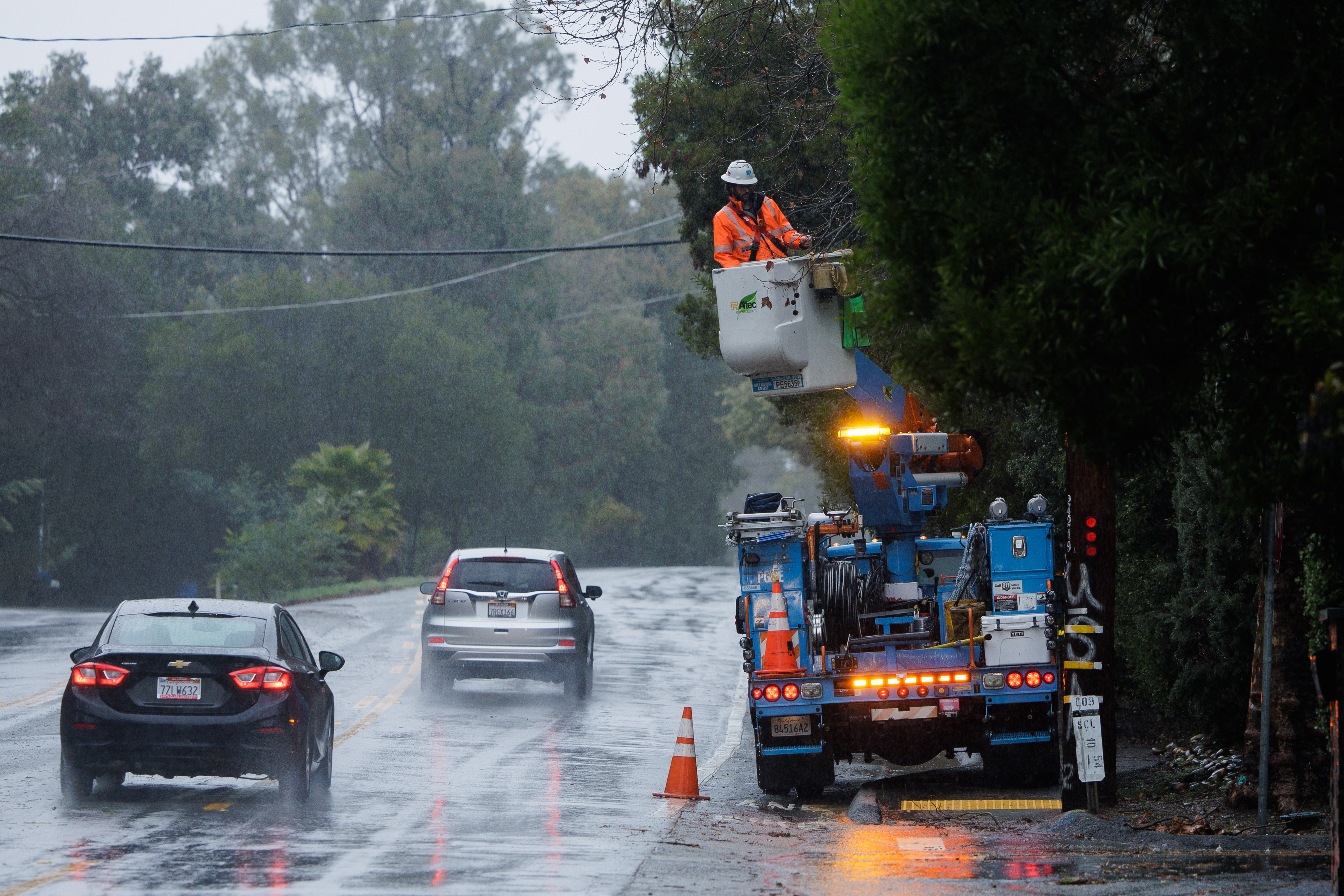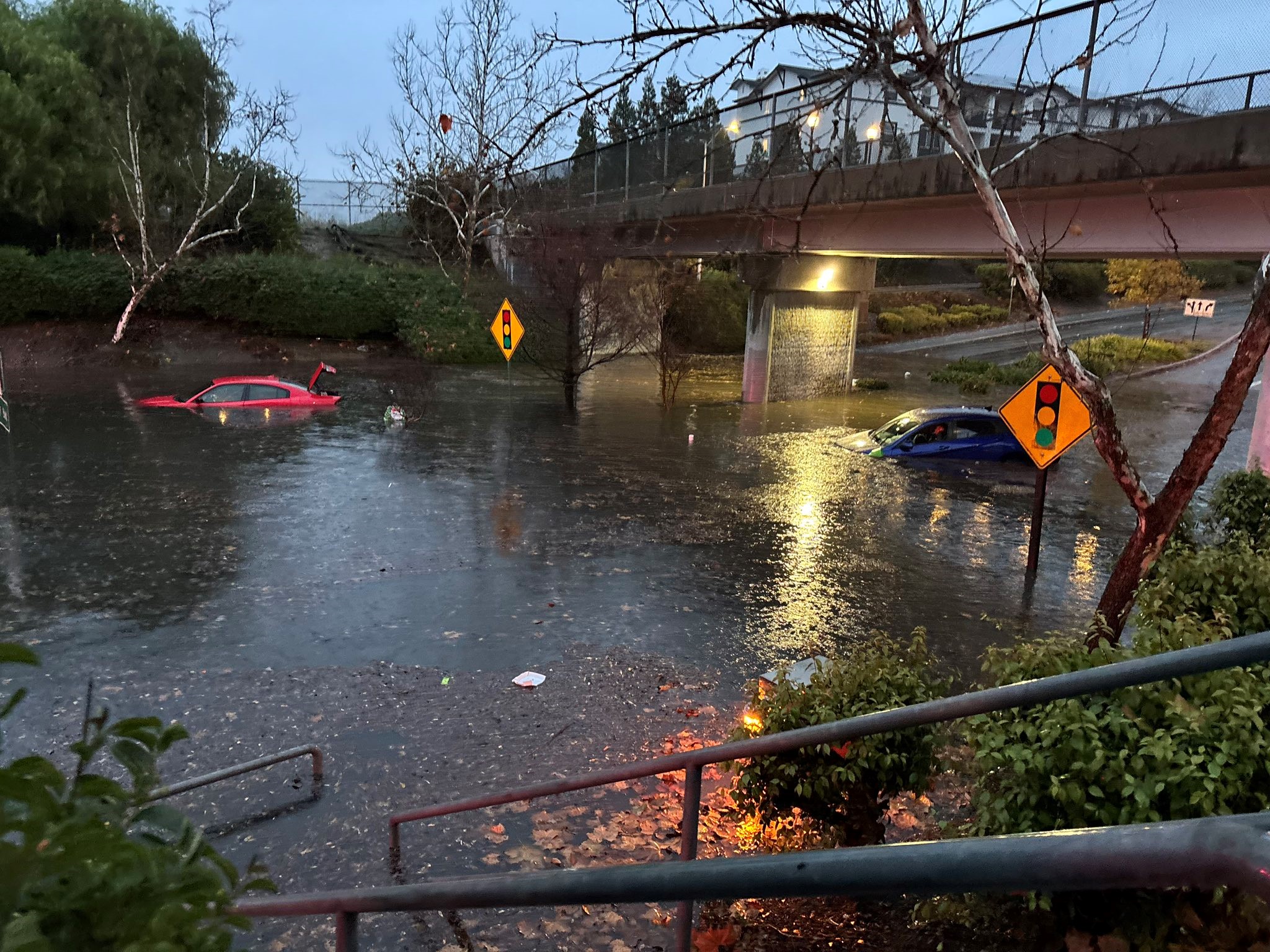A storm and wind gusts of up to 60 mph (96 kph) prompted the first-ever tornado warning in San Francisco and caused some damage in the Bay Area on Saturday. Parts of neighboring San Mateo County were also included in the warning to about 1 million people in the area.
The National Weather Service initially sent a Tornado Warning at around 5:56 a.m. for northern San Mateo County and portions of downtown San Francisco. It was lifted by 6:15 a.m. Radar detected possible tornado conditions near San Francisco, South San Francisco, and Pacifica around 5:55 a.m.
The storm toppled some trees onto cars and streets and damaged some roofs in San Francisco, which has not seen a tornado since 2005, according to the Weather Service. The damage was being assessed to determine if there was indeed a tornado.
“This was the first ever warning for a possible tornado in San Francisco. I would guess there wasn’t a clear signature on radar for a warning in 2005,” said Roger Gass, a meteorologist in the Weather Service’s Monterey, California. He said he was not there in 2005.
Lamont Bain, another meteorologist with the Weather Service's Monterey office, told NBC Bay Area on Saturday that wind gusts of 83 miles per hour were reported Saturday at San Francisco International Airport.
"This is our rainy season, it’s where things can get turbulent, make sure to have multiple ways to stay informed," Bain noted.
The fast-moving storm prompted warnings for residents to take shelter, but few people have basements in the area.
“The biggest thing that we tell people in the city is to put as many walls between you and the outside as possible,” Meteorologist Dalton Behringer said.
Several San Francisco residents said that the howling wind outside woke them up early Saturday morning even before the tornado warning.
Get a weekly recap of the latest San Francisco Bay Area housing news. Sign up for NBC Bay Area’s Housing Deconstructed newsletter.
As for the alert, San Francisco resident Agnieszka Szefer said at first, "I wasn’t sure if it's, like, a real thing because there have been so many alerts recently."
Last week, San Franciscans, along with the rest of the Bay Area, were rattled by a tsunami warning that was canceled too.
San Francisco's Department of Emergency Management emphasized that the National Weather Service "only sends these alerts when there is a genuine possibility of a life safety hazard."
Officials note that these warnings are a good reminder to sign up for local alerts and to make a plan for what you'd do in an emergency.
Though San Francisco didn't see a tornado on Saturday, it did see strong winds that left trees uprooted across the city, downed power lines, and even a roof blown off of a home.
"As of just 11 a.m. this morning, there were already over 120 storm-related emergency calls for service, so we saw a significant number of downed trees, downed electrical equipment," noted Jackie Thornhill with San Francisco's Department of Emergency Management.
The department also noted that San Francisco is trending toward more frequent and intense weather events.
"I think at the high level when you’re talking about the aggregate, it’s pretty safe to say that climate change is causing more frequent and more intense and more extreme weather in places like San Francisco, and so that’s something we’re going to have to contend with and that’s something we’re going to have to be ready to be able to deal with for the years and decades ahead," Thornhill noted.
San Francisco resident Brandy Rodriguez said that she has observed a pattern of more intense weather events causing damage in the city.
"It does seem like it's happening every year, around this time, a lot of trees falling down in the city," Rodriguez said.
On a walk through San Francisco's Mission District, she and a friend came across a 30-foot tree that had been uprooted in the storm.
PG&E said that fallen trees and debris fell into powerlines and damaged equipment. At one point on Saturday morning, PG&E reported that more than 108,000 Bay Artea customers were impacted. By Saturday at 9:30 p.m., PG&E reported more than 21,000 outages, with most of them in the North Bay.
Lauren Flynn said her Mill Valley home lost power Saturday morning, and as of Saturday night, she was still in the dark.
"And I’m sure it's weather related, because it was nasty, with the wind and the rain," Flynn said.
She's been getting by with candlelight and lots of blankets.
"There's no indication from PG&E as to when it's going to turn back on, at all," Flynn noted. On PG&E's outage map, the estimated time for power to be restored at Flynn's address is listed as "to be determined" as of Saturday night.
On Saturday, a tornado was confirmed in Scotts Valley in Santa Cruz County.
And in Nevada, up to 3 feet (91 centimeters) of snow was forecast for Sierra Nevada mountaintops, with a winter storm warning in effect through 10 p.m. More than a foot fell at some Lake Tahoe ski resorts, according to the National Weather Service’s Reno office.
Interstate 80 was closed for about an 80-mile (130-kilometer) stretch from Applegate, California, to the Nevada state line just west of Reno, where rain was falling and a winter weather advisory remained in effect through the afternoon.
The agency also reminds everyone of possible flash flooding due to torrential rains. Everyone is encouraged to stay vigilant and aware of weather conditions.
NBC Bay Area's Christie Smith and Alyssa Goard contributed to the report.



